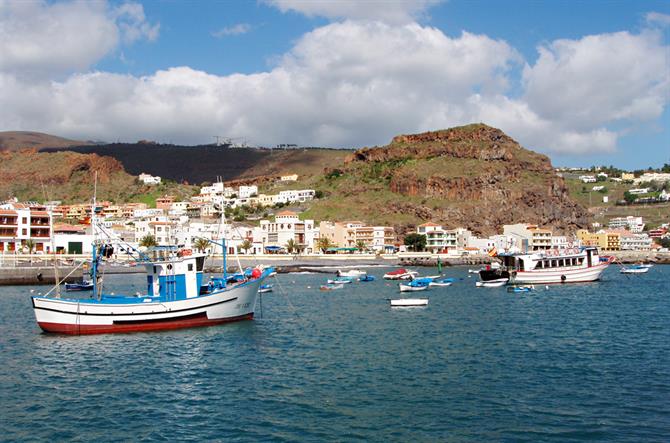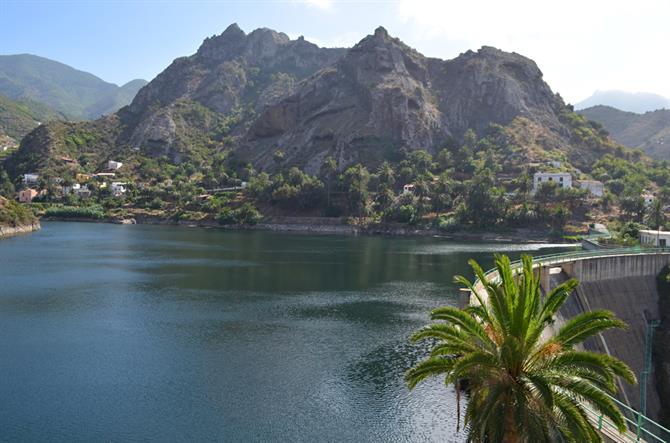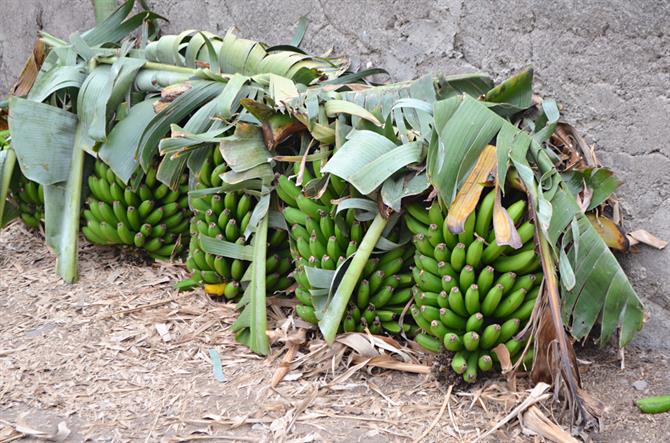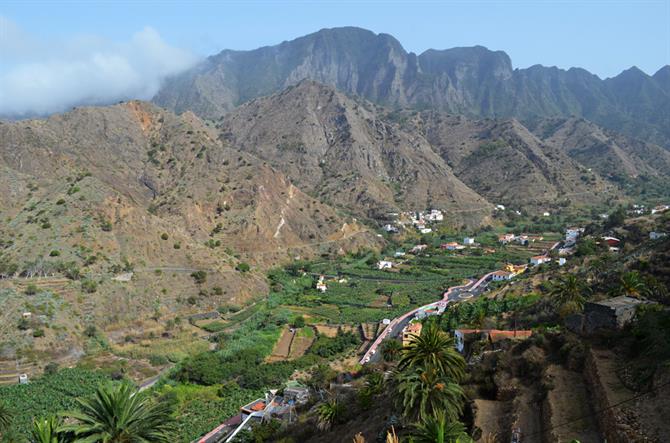La Gomera is the darling of the Canary Islands when it comes to travel articles in the British media. It's hailed as the real deal, lacking the over-developed brashness of its much maligned neighbour, Tenerife.
Apart from singing the praises of this unspoilt hiking paradise, there's one other thing writers tend to have in common. Many of them they stay in the most luxurious hotel on the island in Playa Santiago, one of La Gomera's two tourist resorts. It's not really the ideal base to discover the true magic of La Gomera. For that you have to travel inland.

On the coast
The term 'tourist resort' is relative of course. Sleepy Playa Santiago and slightly less sleepy Valle Gran Rey are hardly most people's idea of towns that have been engulfed by mass tourism. Ironically, it's an accusation that has been levelled at Valle Gran Rey by its quieter neighbour in the past. Although, with hotels and developments on both headlands above Playa Santiago, the smaller fishing community has been quickly catching up over the past few years.

In the hills
The resorts are both located on the island's southern half. Sun traps they may be, but they lack the beauty of the landscape that earned the ancient laurisilva of the interior UNESCO World Heritage Status. Even outside of Garajonay National Park, the imposing and challenging peaks that enclose Hermigua and Vallehermoso leave visitors (first time and return) breathless, irrespective of whether they're trying to climb them or are simply gazing at them in awe.
In one vista you can look over a panorama that could be a dense South American rainforest on one side and a North African hillside on another. In emerald presas (man made reservoirs that on La Gomera can look more like lakes) water fowl and ducks dodge the fishing lines of local children. La Gomera's interior is simply stunningly beautiful.

Life in rural La Gomera
It's not just the scenery that contrasts with the coastal settlements, the inland settlements feel different. A walk along the road from the centre of Vallehermoso to the Presa de la Encantadora passes palm trees where local farmers hack at palm fronds or hang buckets from strings to collect sap to make miel de palma, a sweet syrupy liquid that enhances the taste of anything you drizzle it over. At the end of summer shady garages contain not cars but buckets of bulbous grapes, some of which will inevitably be offered to you if you show the slightest interest. Valley floors are carpeted by an assortment of tropical vegetables and fruits – bananas, papayas, avocado, figs. On a recent visit we stopped to look at unfamiliar green fruit on a roadside hedge outside of Agulo and were promptly told it was passion fruit, before our rucksack was filled with ripe specimens courtesy of a local who just happened to be passing with a bulging carrier bag of the bitter sweet fruit.

Where the coastal towns feel like tranquil small resorts, the inland towns still exude the strong and heady aroma of the rural past of these wonderful islands. That's why heading inland is best to get a real feel for La Gomera.
And, as a bonus, places like Vallehermoso and Hermigua aren't really that far inland. Both have beaches within a couple of kilometres of the town centre. In some ways they offer the best of both worlds.
To find out more about La Gomera and its towns and resorts, take a look at our mini guide.
